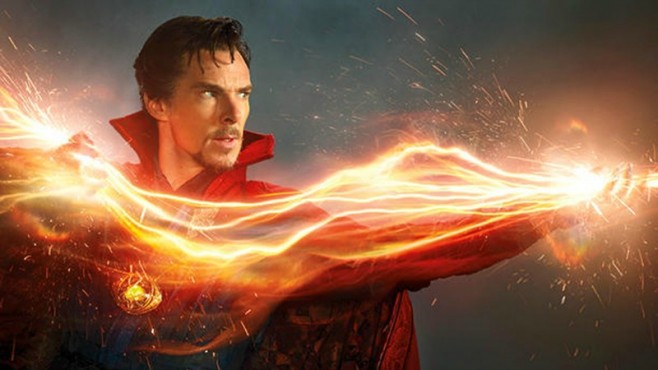

It’s no secret that Marvel movies tend to fall into storytelling ruts. There will always be a love interest, a snarky hero, a big fight scene, a sequel hook, etc. So imagine my surprise when I saw “Doctor Strange,” and it turned out to be one of the most clever comic book movies with an impressive, definite awareness of the genre’s general shortcomings.
Let’s start with what’s sadly the weakest part of many Marvel movies: the romance. Rachel McAdams plays Dr. Strange’s love interest in the movie — a former girlfriend who left him because of his arrogance and general jerkiness. While her role may not be a standout, she’s manages to avoid falling into an annoying damsel in distress character. However, all of that would be pretty unremarkable if it wasn’t for the conclusion of their love story. Instead of magically realizing that they’re perfect for each other, McAdams’ character reminds Strange that there were legitimate reasons they broke up, and his magic powers won’t change that. Contrast this nuance to “Civil War’s” rather forced romantic subplot for example, and you’ll see why this is such a breath of fresh air.
In the vast majority of superhero movies, its practically a tradition to have a massive, city-destroying brawl to emphasize just how high the stakes of the central conflict are. Unfortunately, audiences have become fairly desensitized to these mass destruction gimmicks and are starting to wonder just how many civilians are dying in these scenes. While I’d say that no movie so far has addressed this issue entirely, I have to appreciate “Doctor Strange” for turning the trope directly on its head. Instead of watching buildings crumble around our hero as he battles the forces of evil, Doctor Strange manipulates time to repair an already destroyed city while battling his opponents, making for a clever action sequence and showing that even the people who make these films are getting tired of the same old thing.
Perhaps the best example of “Dr. Strange” subverting superhero tropes is the grand finale where our hero confronts the dreaded Dormammu. Any other movie would have had Dormammu and Strange shoot magic beams at each other while plucky side characters try to figure out how to shut off the giant portal in the sky. Instead, we’re treated to a delightfully innovative scene in which Strange traps the infinitely more powerful Dormammu in a constant time loop, tricking him into giving into Strange’s demands. I have a special love for this scene because it shows that the movie, and the Marvel Cinematic Universe as a whole, understands what separates Doctor Strange from other Marvel heroes. Even with all his power, he finds himself going up against unspeakable nightmares that are far beyond his ability to match in a simple fight, and he has to rely on his wits and wisdom to win the day. When was the last time a superhero won by being smarter than the villain rather than by punching him into submission? Don’t get me wrong, I love the punching, but this is a welcome change of pace.
The film’s attitude towards Marvel standards, and film standards period, is evident in “Doctor Strange’s” action scenes. How do you outrun someone who can manipulate the very architecture of a mirror reflection of New York City? The film takes a standard action scene — a foot chase and a fist fight — and incorporates insane levels of special effects to turn something familiar into something completely different. The resulting action scenes force the characters, and therefore the film itself, to get smart and creative when using their powers, and it is wonderful to watch.
Will the tried and true superhero formula ever go away? No, and it shouldn’t. It’s a story structure that’s proven to be extremely effective, not to mention profitable. Still, “Doctor Strange” shows that Marvel is still willing to change things up when it comes to the execution of this formula, a trend begun by “Ant Man” and “Civil War’s” more personal and intimate conflict. Hopefully, the success of this movie will give Marvel Studios the courage to experiment with the standard formula more and come up with new and exciting ways to tell us stories about guys and gals running around in tights. Let’s see power sets that go beyond “ways to hit things” and heroes finding creative solutions to their problems, rather than just punching everything in the face.